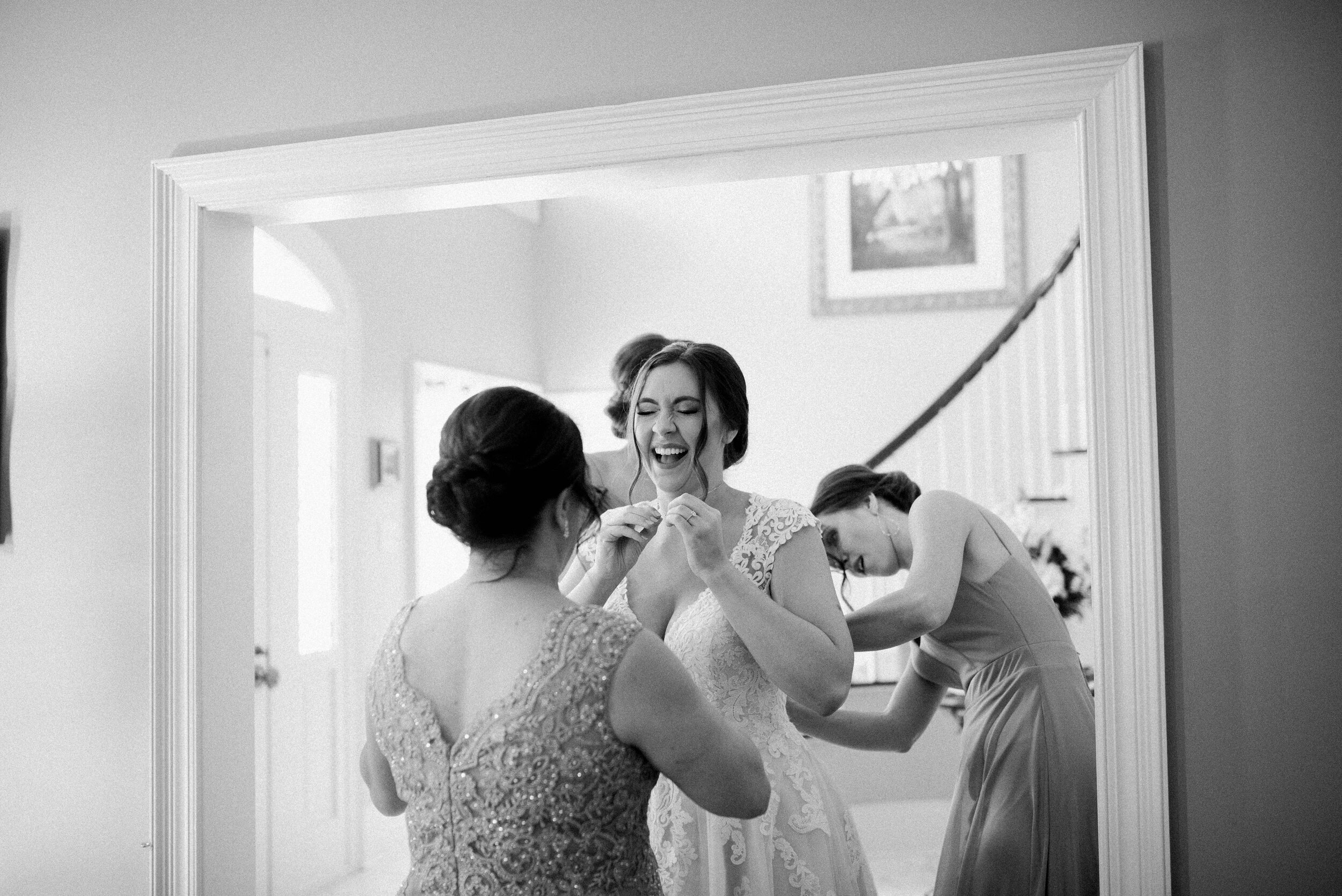Disclaimer: 10 MINUTE READ. This is a wordy post but it’s filled with helpful and important information, save it for later if you don’t have 10 minutes to spare at this moment. I wish I would have had this information at my fingertips (or rather drilled in my stubborn head) when beginning my photography career and also when I had children and began to overload my phone with photos (which have been lost several times due to failing technologies!)

Don’t let precious images like this one disappear because you didn’t keep a backup or print copy!
If you’ve hired a professional photographer recently for family portraits, headshots, or your wedding then you likely have a collection of hundreds of files sitting somewhere, either in an online gallery or on a usb. So, now what?! The task of narrowing down dozens, hundreds, sometimes thousands of files to just a handful for print can seem daunting. I’ve designed this post to help with the overwhelming tasks of longterm storage for your files, narrowing it down to your favorites, and making beautiful prints. There’s a bonus link at the bottom that will take you to a great post on how to create a gallery wall in your home!
Storing + Organizing Your Photo Files
Before you do ANYTHING else make sure you have a solid, organized, backup system. I’ve outlined my backup process below in hopes it will help you navigate your way to your own sensible solution.
All of my photo files are backed up on an external hard drive as well as online through Carbonite. Your personal galleries also serve as 10 years cloud backup which is useful both to myself and YOU! When you book a session and receive your images, depending on your session inclusions, you’ll receive your files via online gallery and possibly a USB as well. Follow the steps below to ensure your files are safe and you’ll be less likely to feel that sinking feeling when a piece of technology fails you or becomes corrupt…which will happen one day.
STORAGE
-
Store your gallery information in a safe place. Your PASS Gallery serves as 10 years cloud back up but this does you no good if you can’t remember your link + password information.
-
Download your photos – even if just your favorites – and save them to your computer or other electronic device. There are helpful steps further along in this post to help you narrow down to your favorites.
-
Purchase an external hard drive to store all of your precious family media on. Videos and digital photographs can be stored safely here and in an emergency, it’s more practical to expect to grab a small external hard drive than it is to yank a computer off your desk! I use Western Digital hard drives and have never had a problem. If you keep a lot of files be sure to purchase one large enough to last a few years. I go through 2TB hard drives like I go through chocolate chip cookies, but that’s the nature of this job. You could probably get away with a 64gb or 1TB and they’re available on Amazon for around $50. It’s worth every dollar to preserve your memories!
-
Online backup. Setting up some form of online backup is useful for your personal memories as well as the other important information you keep on your computer. You can set up a variety of cloud services or even a system like Carbonite, which is what I use. I have had crashes and Carbonite has pulled me through every time. Knowing the contents of my computer are safe and secure gives me piece of mind as it protects me and my clients.
ORGANIZATION
-
Developing an organizational system that makes sense to you is the most important piece of this puzzle. Here’s how I do it – hopefully it helps you!
-
I have developed a system of folders and clear labeling that allows me to easily find current and archived images within seconds. A digital catalogue (like a table of contents if you will) has every job listed for all of my external hard drives. I will try my best to explain this in a way that makes sense, though this is the first time I’ve ever tried to explain it!
-
FIRST – I have ONE external hard drive per year of work and a separate one for personal photos – though the personal one spans more than one year. Each clearly labeled with a sticker or bit of tape and sharpie marker.
-
My work hard drives contain separate folders for each job and each folder is named with the date of the job first (weddings only), followed by the clients’ names. IE: 10.10.10_Louis + Clark_Wedding Day. Other session folders are named with this format: John + Patty Smith_Fall 2019 or Kelly_Bridals_2019.
-
My personal photos are separated by year as well in individual folders and then labeled according to season or event. (Cowsert Thanksgiving_2019, First Day of School_2019 or Summer_2019). This helps me easily find things when I want to share or print an image.
-
After I make sure my folders are safe and secure on the appropriate external hard drive I update my written catalogue. Since I have dozens of hard drives from years of work and due to large file sizes, I can easily reference the written catalogue versus plugging in hard drives while I try to guess which year a certain wedding or event occurred. The catalogue is written in an outline format as follows: The dates before the weddings help to keep them visible in chronological order and then everything else will follow after that in alphabetical order. Clean + Simple!
-
2019 (BLUE Western Digital)
-
01.01.19_Holly + Sam
-
02.02.19_Mark + Ally
-
03.03.19_Heather + Tim
-
04.04.19_Mike + Chris
-
Erich Family_Summer 2019
-
Kelly_Bridals_2019
-
Smith Family_Fall 2019
-
-
2020 (YELLOW Western Digital)
-
01.01.20_Sarah + Steve
-
You get the idea by now!!
-
-
-
Last but importantly, I save this catalogue on my computer desktop for easy reference. It’s updated frequently so this makes the most sense for me. My Personal catalogue is exactly the same – with the folders written in outline form as they appear on the hard drive. It’s basically a map of your folders that will lead you easily to your files! Overkill, maybe – but it sure does come in handy when a bride from 2013 wants an image or two because she’s traveling and doesn’t have access to her files!
-

When this dapper little guy grows up and possibly gets married you’ll love being able to easily find this gem amidst your family photos, years later, without much digging! An organized catalogue will do the job!
How to Narrow Down to your True Favorites + Printing Advice!
Step 1: Choosing Favorites
Yes, you must pick a favorite. It can and will be done and here are 5 tips to help!
-
Ask yourself a few questions. Are you printing to frame and hang a gallery wall? Are you printing for gifts or thank you cards? Knowing WHY you want to select a group of favorites will help you in the long run to notice your best images more easily.
-
After you’ve figured out why you want to narrow down to just a few, go through the relevant groups of images intuitively marking your favorite ones. You won’t narrow it down completely, but go with your gut and don’t stop to pause, just click click click.
-
From this smaller but not small enough group you can now weed out images with compositions that are similar or even identical by looking at all persons and choosing the ONE image from each group where you look collectively your best. If you’re struggling – ask for someone else’s opinion – which you can then completely ignore.
-
Next you’ll want to separate the chosen ones from whole collection so you can look at them standing alone. If it helps and if time allows – order an inexpensive set of proofs or 4×6 photos so you can view the images off screen.
-
Finally, checks and balances. Evaluate your group of final images and look for balance. Is it a well rounded collection that achieves the overall look or goal you originally set out to accomplish? Have you covered all the questions you asked yourself in #1? If so, then hooray! It is time to print. If not, go brew some coffee, take a walk, sleep a night and revisit the images at another time. Nothing will make the task more challenging than spending too much time going back and forth in one sitting. Take a break – and try again tomorrow.
-
With practice you will hone your selection skills and it will become easier to see which types of images you’re most likely to enjoy on your walls, in your albums, and for gifts. You’ll be able to select your favorites within minutes after you do this a few times!
Step 2: Ordering Prints
There are dozens of options out there for printing. I definitely have some tested favorites, here they are!
-
Artifact Uprising – gorgeous framed and ready to hang prints. AU products are stylish and durable and worth every dollar. I absolutely LOVE the look of the matte finish on a boarded print when ordering loose prints as well.
-
Mpix – less expensive and still lovely. Mpix also offers a variety of gifts and other items.
-
Minted – this is my go to place for holiday cards and I’ve recently partnered with them and can now offer you can exclusive discount! Ask me about it!
BONUS: Here is a great post about how to create your own gallery wall!
I'm excited to hear from you!
Ready to work together?
you Love what you see
Inquire Now